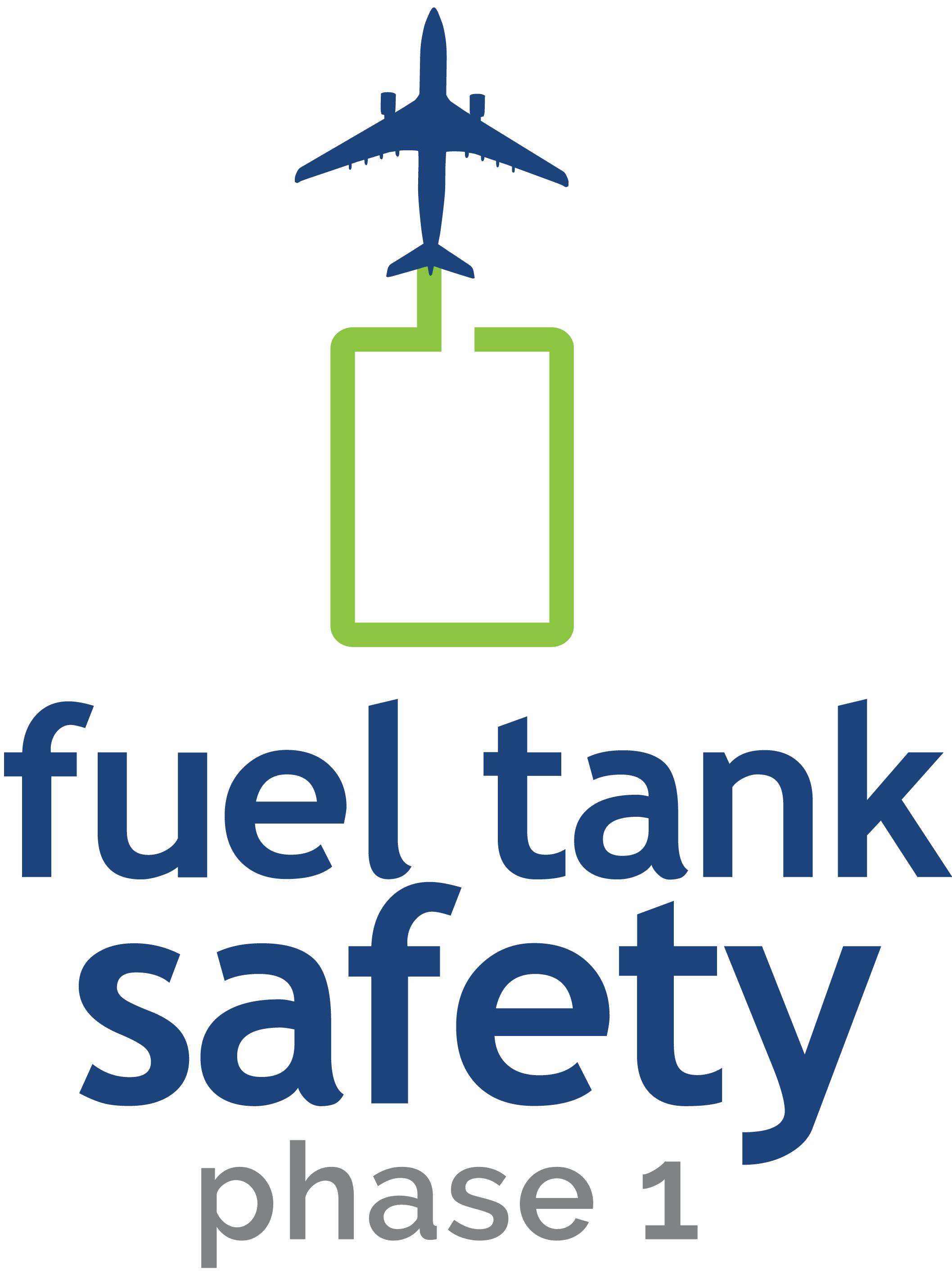Fuel Tank Safety (Phase 1) Initial Training
TRAINING TYPE
Fuel tank safety - video presentation with voice over, (pre-recorded, self-paced)
TIME REQUIRED
At least 2 hours 27 minutes
ABOUT THE COURSE
FTS (phase 1) aviation online training program will include the theoretical background behind the risk of fuel tank safety, concepts to prevent explosions.
The program will includes a short background, showing examples of the FTS accidents and incidents, the description of concept of fuel tank safety and Critical Design Configuration Control Limitations (CDCCL).
The examples of manufacturer's documents showing the CDCCL items, the cases of FTS defects, as well as the examples for maintenance instructions for inspection.
OBJECTIVES
The trainee should, after the completion of the training:
- Be familiar with the basic elements of the fuel tank safety issues.
- Be able to give a simple description of the historical background and the elements requiring a safety consideration, using common words and showing examples of non-conformities.
- Be able to use typical terms.
TARGET GROUP
- Organization management structure persons,
- Quality managers
- Maintenance organization management personnel,
- Quality auditors,
- National aviation authority personnel
BENEFITS
- Flexible: it's a pre-recorded self-paced course
- Demo version preview
- Technical Support
- Cost-effective
- Online training certificate issued by EASA Part-147 approved Maintenance Training Organization (MTO)
NECESSARY CONDITIONS
- Internet access
- Fluent technical aviation English language
- At least 2 hours 30 minutes of learning time
PREREQUISITES
Familiarity with relevant regulations
GROUP SIZE
Unlimited size for online training
EXAMINATION
- During the course, interactive questions are asked to make sure that students understand the course material
- No examination
COMPLETION
Upon successful completion of the training course (100%), participants will receive an Online Training Certificate issued by FL Technics, which is an EASA Part-147 approved Maintenance Training Organization (MTO).
FL Technics is approved to the requirements of:
- Part-147 under approval reference No LT.147.001 Part-145 under approval reference LT.145.011
- Part-CAMO under approval reference No LT.CAMO.0015
- Part-21 under approval reference EASA.21J.496 and LT.21G.0004
- ISO 9001:2015 and ISO 14001:2015
NOTE
- For private accounts: purchased FTS (phase 1) online training course can be activated within the 6 months past the purchase date. Once the course is activated it must be completed within the period of 2 months.
- For corporate accounts: purchased FTS (phase 1) online training course can be activated within the 1 year past the purchase date. Once the course is activated it must be completed within the period of 2 months.
CONTENT
- Introduction
- The theoretical background behind the risk of fuel tank safety, concepts to prevent explosions
- The major accidents related to fuel tank systems
- The requirements of SFAR 88 of the FAA and JAA Interim Policy INT POL 25/12
- The results of SFAR 88 of the FAA and JAA INT/POL 25/12
- Airworthiness Limitations and CDCCL in the context of Maintenance Data
- Examples of defects and the associated repairs as required by the TC / STC holder’s maintenance data
YOU MIGHT ALSO BE INTERESTED IN
Fuel Tank Safety (Phase 1) Initial Training

